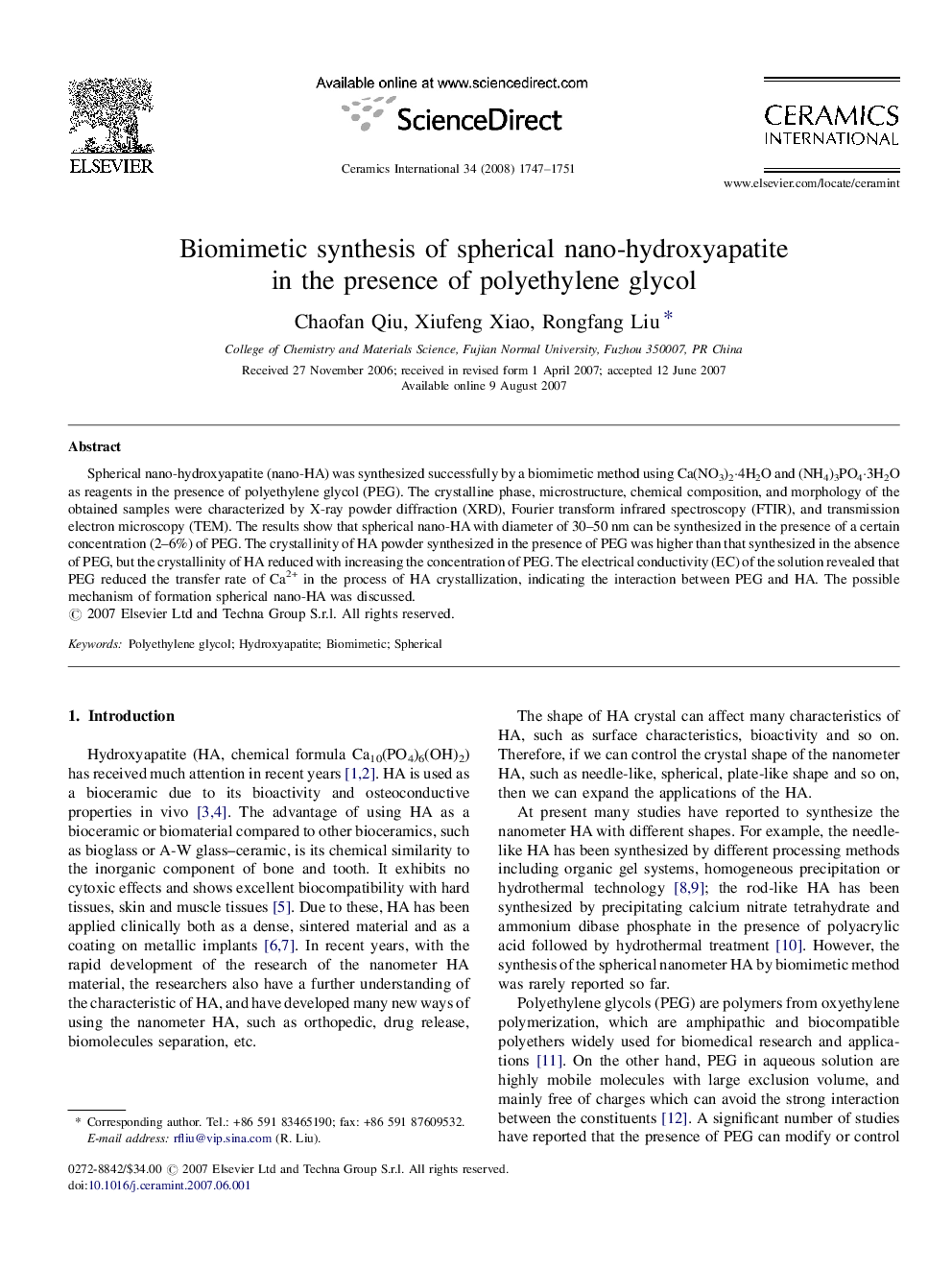| Article ID | Journal | Published Year | Pages | File Type |
|---|---|---|---|---|
| 1464904 | Ceramics International | 2008 | 5 Pages |
Spherical nano-hydroxyapatite (nano-HA) was synthesized successfully by a biomimetic method using Ca(NO3)2·4H2O and (NH4)3PO4·3H2O as reagents in the presence of polyethylene glycol (PEG). The crystalline phase, microstructure, chemical composition, and morphology of the obtained samples were characterized by X-ray powder diffraction (XRD), Fourier transform infrared spectroscopy (FTIR), and transmission electron microscopy (TEM). The results show that spherical nano-HA with diameter of 30–50 nm can be synthesized in the presence of a certain concentration (2–6%) of PEG. The crystallinity of HA powder synthesized in the presence of PEG was higher than that synthesized in the absence of PEG, but the crystallinity of HA reduced with increasing the concentration of PEG. The electrical conductivity (EC) of the solution revealed that PEG reduced the transfer rate of Ca2+ in the process of HA crystallization, indicating the interaction between PEG and HA. The possible mechanism of formation spherical nano-HA was discussed.
